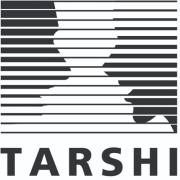Did You Know? - Gay Pride Parades
Gay Pride Parades
Gay Pride Parades are held to signify the discrimination faced by sexually marginalised groups and the struggle to overcome discrimination. These parades are a global symbol for LGBT (Lesbian, Gay, Bisexual and Transgender) people and are held in many cities of many countries. They can range from being a couple of hours long or constitute days and even a week of celebrations with dances, festivities and performances. Over the years, the LGBT community has started using the Gay Pride parade to claim sexual identity as a matter of pride. A number of symbols that are used during the Gay Pride parade or Gay pride week are the rainbow flag, and the symbols of black and pink triangles.
These parades are usually held in the middle of the year to commemorate the Stonewall riots in June 1969 when there were a series of violent conflicts between the New York city police and the community of gay and transgender people. The incident is historically significant as it was perhaps one of the first few public protests by the gay and transgender community towards atrocities committed by the police.
In recent years, Gay Pride parades are also taking place in South and Southeast Asia.
Asia’s first Pride parade was held in Manila in The Philippines in 1994 to commemorate the Stonewall riots. Each year LGBT people along with other individuals and organisations get together in Manila to promote the celebration of diversity in sexuality.
The first Rainbow Pride Walk was held in Kolkatta, India in 1999. In a country where gay people live in the shadows and where homosexuality is still criminalised, the Pride Walk is a bold political statement. Kolkatta is also the first city in India to host the Pride Week with film screenings, cultural performances, talks and other events. Bangkok also held its first Pride parade in 1999.
Many of the participants at the first Gay Pride parade in 2003 in Taipei, Taiwan, wore masks to hide their identity in public as sexuality is still a taboo subject in Taiwan. The parade was attended by around 1000 people from various sexually marginalised groups such as sex workers, LGBT people, people living with HIV etc. An interesting slogan at the second parade was ‘Citizen with Exceptions · City with Colors · Society with Varieties · Politics with Participation’. Significantly, many candidates for the legislators’ election also showed up as the elections were close.
Closer home, in Nepal, the first Pride march was held in Kathmandu on August 31, 2004, the day of the Gai Jatra (the procession of cows). It is one of the oldest holidays celebrated by Hindus and Buddhists to commemorate it as a day for remembering loved ones who died in the preceding year. It is celebrated with a lot of pomp every year with people dressing up in colourful clothes and young men from the Newar community wearing women’s clothing. Gai Jatra was celebrated as a day to use political and social satire to oppose any kind of political suppression. Given the historicity of the festival, the occasion has been used by Blue Diamond Society and other individuals and organisations to protest against discrimination towards LGBT people.
